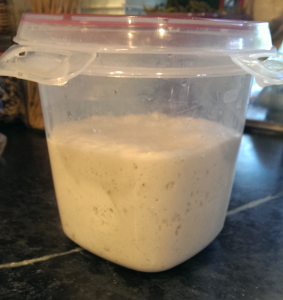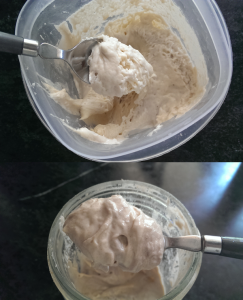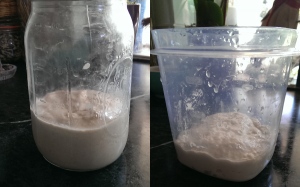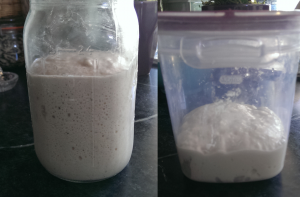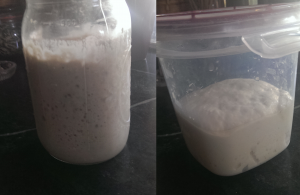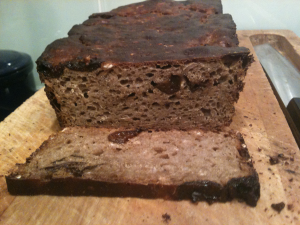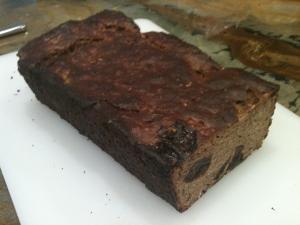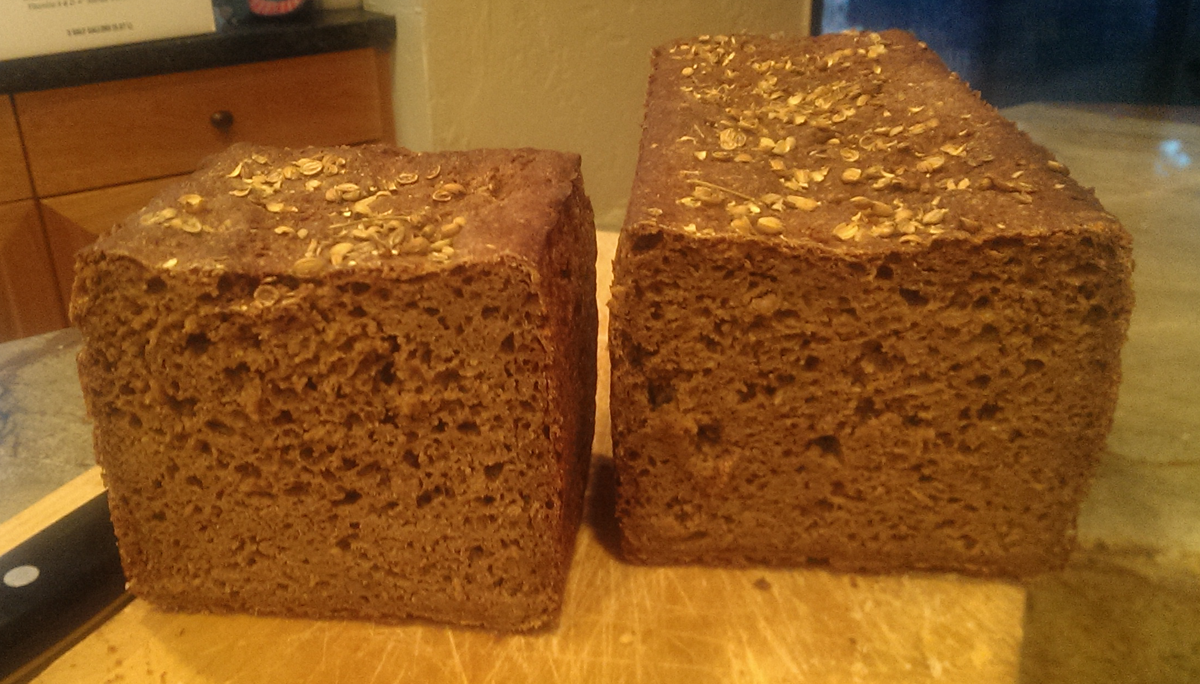 Yield: Two 25 oz. (700g.) loaves
Yield: Two 25 oz. (700g.) loaves
Borodinski, with its moist, open crumb and assertive coriander flavor, is arguably Russia’s best-known and best-loved rye bread. This wasn’t always so, however: in the 1920s and 1930s, Borodinski could only be had in Moscow, and those who had the choice preferred those made by Latvian bakers. With the great push toward industrialization in the 1930s, Soviet factory bakeries opened across Russia and introduced the bread nationwide.
Numerous recipes exist, some yeast-leavened, others built on a sponge. Some specify pan loaves, others hearth loaves. All, however, preserve the 80%-20% rye-wheat ratio and all use a scald containing roasted rye malt.
This recipe emphasizes the interplay between sour and coriander-infused sweetness. It takes time – nearly a full 24 hours – to bring together, but the results are well worth it.
Sponge:
Volume |
Ingredient |
Ounces |
Grams |
Baker’s |
| ⅓ cup | Rye sour | 2.10 | 60 | 8% |
| 2 cups | Medium rye flour | 8.80 | 250 | 35% |
| 1¾ cups | Water | 14.65 | 415 | 58% |
Scald:
| ¼ cup | Malted rye (available at home brewing supply stores) | 1.25 | 35 | 5% |
| 1 Tbs. | Coriander seed | 0.15 | 4 | 1% |
| ¾ cup | Coarse rye meal | 4.05 | 115 | 16% |
| 1¼ cups | Boiling water | 10.60 | 300 | 42% |
Dough:
| 1⅔ cups | Medium rye flour | 7.40 | 210 | 29% |
| 1 cup | First clear or high-gluten flour, unsifted | 4.95 | 140 | 20% |
| 2 Tbs | Unsulphured molasses | 1.40 | 40 | 6% |
| 1 Tbs | Red rye malt (see Step 2.) | 0.35 | 10 | 1% |
| 1⅔ tsp | Table salt | 0.35 | 10 | 1% |
| 1-2 tsp | Coriander seed for garnish | 0.05 | 2 | – |
- Mix together the sponge ingredients until well blended, cover loosely and let stand overnight.
- In a frying pan, roast the malted rye over medium heat until it turns a deep rose pink, about 3 minutes, and pulverize the red malt and coriander seed in a spice grinder or mortar and pestle. Add to the rye meal and boiling water, mix until smooth, cover with plastic wrap and let stand overnight.
- The next day, combine the sponge and scald in the bowl of a stand mixer, cover with plastic wrap and set aside to ferment for 5-6 hours, until the mass has roughly doubled in bulk. Add the dough ingredients, use the flat beater to mix at low-medium (KA 3-4) speed until you have a soft, smooth dough the color of dark coffee. Cover and let stand 1 hour.
- Carefully spoon the dough into two well-greased 8½” x 4½” (21 cm x 11 cm) loaf pans. Use wet hands to distribute the dough evenly and smooth the tops. Add 1 Tbs/15 ml. of water to each pan to keep the dough moist, cover with plastic wrap and proof in a warm place until the tops of the loaves show holes, about 2 hours. Garnish with whole or coarsely crushed coriander seeds.
- Preheat your oven to 550°F/290°C, with the baking surface in the middle and a steam pan on a lower shelf. About 10 minutes before bake time, add 1 cup/225 ml. of boiling water to the steam pan, using a silicon oven mitt to avoid burns.
- Place the loaves in the oven and replenish the steam pan with another 1 cup/225 ml. of boiling water. After 10 minutes, reduce temp to 350°F/175°C and cover the loaves with aluminum foil. Bake an additional 50-60 minutes, remove the steam pan and unpan the loaves. Return them to the oven for 10-15 minutes to firm the crust. Let cool thoroughly before slicing.

